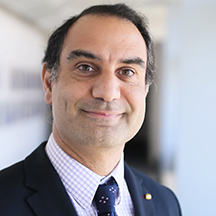
Olfactory Neuroblastoma (Esthesioneuroblastomas)
What is Olfactory Neuroblastoma?
Olfactory neuroblastoma, also known as esthesioneuroblastoma, is a rare type of malignant tumor that originates from the specialized nerve cells located in the upper part of the nasal cavity. These cells are responsible for the sense of smell, hence the name “olfactory” neuroblastoma. Olfactory neuroblastoma typically occurs in the nasal cavity and the nearby areas, such as the ethmoid sinuses.
The exact cause of olfactory neuroblastoma is not well understood. However, genetic mutations and chromosomal abnormalities are believed to play a role in its development. Exposure to certain environmental factors or occupational hazards may also be associated with an increased risk, although this relationship is not fully established.
Olfactory neuroblastoma primarily affects adults, with a peak incidence in the fifth and sixth decades of life. The most common presenting symptoms include nasal congestion, epistaxis (nosebleeds), nasal obstruction, and a decreased sense of smell. Other possible symptoms may include facial pain, headache, vision changes, and swelling around the eyes.
Treatment for Olfactory Neuroblastoma
Minimally invasive endonasel endoscopic surgery is now possible for most Olfactory Neuroblastomas
Olfactory neuroblastomas (esthesioneuroblastomas) arise from the olfactory nerves in the skull base and nasal cavity.
The optimal treatment for most patients with olfactory neuroblastomas (ONB) is maximal surgical removal followed by radiation and in some instances chemotherapy. Fortunately, for most patients with ONB, surgery can be performed via the nose using an endoscopic endonasal approach, although some large ONBs require a combined endonasal and trans-cranial approach. At Pacific BTC, we have large experience in treating olfactory neuroblastomas and related sino-nasal tumors.
By incorporating cutting edge technology and instrumentation with proven surgical experience, we make surgery for ONBs and related skull base tumors safer, less invasive and more effective. Our neurosurgeons work closely with our radiation oncologists, neuro-oncologists and neuropathologists to design the optimal treatment plan that incorporates the latest in radiotherapy techniques and tumor biomarker studies.
By using comprehensive tumor histological subtyping and genomic sequencing, we are able to provide a personalized therapeutic approach for each patient with ONB.
Learn more about our multidisciplinary team
Overview
Olfactory neuroblastomas (ONBs) are rare malignant tumors that arise from the olfactory nerve (sense of smell) and extend into the nasal cavity. They are locally invasive tumors that grow into the ethmoid and other air sinuses and can extend onto the orbits as well as the brain.
In cases with intracranial (brain) extension, the tumor typically grows through the anterior skull base dura in the area of the cribiform plate and into the brain cavity elevating or infiltrating the frontal lobes. They occur equally in adult men and women and are uncommon in adolescents. Spread of disease to local lymph nodes and distant metastases occur in some patients. The most commonly used grading system for esthesioneuroblastoma is the Kadish system which includes grades A, B and C:
- A. Nasal cavity only,
- B. Nasal and paranasal sinus involvement,
- C. Extension beyond nasal and paranasal sinus with intracranial, orbital, lymph node or distant metastases.
Symptoms
Olfactory neuroblastomas typically cause loss of sense of smell (anosmia), epistaxis (nasal bleeding), nasal congestion/obstruction, vision loss and headache. If the tumor invades the dura and intracranial space, seizures and/or cognitive changes may occur.
Diagnosis
Diagnosing olfactory neuroblastoma requires a combination of imaging studies and histological examination. Imaging techniques such as magnetic resonance imaging (MRI) and computed tomography (CT) scans are used to visualize the tumor, assess its size, extent, and involvement of adjacent structures. A biopsy is necessary to obtain a tissue sample for microscopic analysis to confirm the diagnosis and determine the tumor grade. For large, highly vascular tumors, pre-operative angiography and tumor embolization is often indicated.
Treatment
The aggressive nature of ONB typically warrants multimodality treatment including surgical removal and radiotherapy in most cases and sometimes chemotherapy. Traditionally, most Stage C tumors (with cribiform plate and intradural involvement) were treated with a craniofacial surgical approach involving a transnasal approach and a frontal craniotomy.
However with advances in endoscopy, instrumentation and anatomical understanding, many if not most olfactory neuroblastomas can now be removed via an Endoscopic Endonasal Approach, including those with intradural extension. For some very large tumors with intracranial extension, a combined cranio-facial approach may still be needed.
After maximal surgical resection, focused radiosurgery or radiotherapy and chemotherapy is often indicated. Given advances in personalized and targeted genomic-based therapies, we routinely bank tissue for genetic analysis and detailed tumor biomarker studies. Having such critical biomarker data opens the door for novel therapies and ongoing or future clinical trials. Learn more about our tumor genetic sequencing capabilities.
Doctors and Specialists Who Treat Olfactory Neuroblastoma
What is Olfactory Neuroblastoma? Olfactory neuroblastoma, also known as esthesioneuroblastoma, is a rare type of malignant tumor that originates from the specialized nerve cells located in the upper part of…










